Hi all!
Hope that your transition back into the work week has been relatively painless.
It seems that everywhere we turn these days, we’re reminded of mounting health epidemics: cancer, heart disease, high blood pressure, HIV/AIDS. Very few of us can say that our lives have not been touched in some way or another by one of these afflictions. Most of us have also brushed paths with an equally life-altering disease: diabetes. Nearly 200 million people worldwide suffer from diabetes. It’s becoming increasingly rampant worldwide, and a number of troubling recent studies suggest that is is becoming particularly prevalent among children and teens.
Much of the literature, cookbooks, and information geared towards diabetes sufferers focuses on substitution and replacement. Naturally, sugars have to be watched assiduously in a diabetic diet, and so many recipes for diabetics feature artificial sweeteners. While these may prove less immediately harmful than regular sweeteners, they pose their own problems; artificial sweeteners are,by varying degrees, toxic, and they’re not ideal unless no other option is present.
For this reason, a number of enlightened educators and spokespeople are offering diabetes sufferers more natural and organic options than your typical oatmeal cookies baked with Splenda. Among them is Jessica Apple, founder of A Sweet Life (www.asweetlife.org).
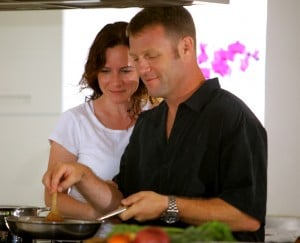
Instead of letting diabetes depress them, Mike and Jessica took charge of their health as best they could. And as they worked together and saw how well they managed as a team, they decided to create A Sweet Life in order to reach others in the diabetic community. The website features articles, interviews, Q&As with experts, and a tally of diabetes in the news. Jessica’s panel of experts includes diabetes sufferers, MDs, RDs, and — to answer questions on raw foods and all natural eating — yours truly!
For, as a part of her interest in a natural, unprocessed diet, Jessica is a big fan of raw foods. In fact, she chooses to incorporate something raw into each and every meal or snack.
Today, I welcome Jessica to Choosing Raw to discuss her experience with raw foods, her thoughts on living with diabetes, and more about A Sweet Life.
What was your motivation to begin publishing A Sweet Life?
The idea for A Sweet Life came to me almost a year ago. I was pregnant, exhausted, and a newly diagnosed type 1 diabetic. My husband, Mike, has been a type 1 for about eight years. Because of Mike, I already knew pretty much everything about living with type 1, still, having it in my own body made it different. Mike’s compassion and real understanding of what I was going through was more helpful than any doctor’s instructions or advice. Feeling that, and seeing the way Mike and I worked together as a team made me want to reach out to others in the diabetic community.
How do you feel that A Sweet Life differs from other online resources for diabetics—specifically, how do you feel your dietetic perspective may be different from others?
A Sweet Life is different from other online resources because we aren’t looking for a way around our diabetes. We’re living a healthy life with it. We think it’s wrong to try to replace regular cookies with artificially sweetened cookies. Our idea is about getting used to a new way of living—a way that is so much healthier. That’s why we appreciate raw food so much. It’s just plain old good for you! At A Sweet Life we believe in a natural diet, and we use only natural sweeteners that are diabetes-friendly, like Stevia and agave syrup.
Could you say a few words about your own journey as a Type 1 diabetic? I know that your husband has the condition as well, so feel free to share some of his experiences, too.
My journey as a type 1 is just beginning. Next month will be a year since my diagnosis. I was diagnosed while pregnant. Fortunately, I didn’t suffer any severe symptoms before diagnosis. Mike, however, was not as lucky. He was really sick for months before we knew what was wrong. By the time he was diagnosed he’d lost about 25 pounds, his feet were numb, and his vision was blurred.
This may feel rudimentary to you, but many people (at one point in time, this included me) don’t quite grasp the difference between type 1 and type 2 diabetes. Could you give us a quick primer?
Type 1 and type 2 are very different diseases with the same consequence—high blood sugar. In each disease, insulin plays a key role. Type 1 is an autoimmune disease in which the immune system destroys the insulin producing beta cells in the pancreas. Without insulin, the hormone that enables sugar to enter individual cells, the cells do not receive their ‘fuel’ and ultimately, they starve. In order to survive, type 1’s must inject themselves with insulin.
In type 2 diabetes, the pancreas produces insulin (even over-produces it sometimes) but the individual cells are unable to use it; they are insulin resistant. In later stages of type 2, the pancreas sometimes burns out from overwork and insulin secretion decreases. For more on this, check out the information on A Sweet Life.
You call your blog “The Natural Diabetic.” This is a provocative term – and it’s of particular interest to me, since so much of what I try to share at Choosing Raw is natural, unprocessed relationship to the things on our plate. Tell me more about the language you chose, and why you chose it.
The first reason I call my blog The Natural Diabetic is because I try to eat a natural diet that’s rich in vegetables, nuts, and some fruit. The name is also a play on words; given that my husband was a diabetic first, and I knew so much about it, diabetes came pretty naturally to me.

I have a huge appreciation for raw foodists. I don’t have any statistics to quote you regarding raw food and diabetes, but I know that when Mike and I eat raw food, our blood sugar remains quite stable (though I don’t think this would be true if we ate large quantities of fruit). That’s one of the reasons we are so happy having raw recipes on ASweetLife.
How do you personally feel about raw food? Have you incorporated any raw foods into your life, and how? We want to hear all about your baby steps!
Personally, I think eating raw is healthy and admirable. I wish I could do it 100%, but I’m nowhere near ready to give up my morning cappuccino! My rule is that I aim to never eat anything, not even a snack, unless it has a raw component. Keeping to this rule ensures that I snack on fruit, veggies, and nuts. And my meals almost always include raw salads.
What are some of your very favorite raw recipes?
I love your recipe for zucchini hummus! Since I have a very busy household (I have three sons, 9, 6, and 7 months) I don’t have a lot of time to fuss over raw recipes. For me it’s usually just grabbing some nuts, a carrot, an apple…Lately I’ve been eating a lot of cucumbers. Also a lot of almond butter…I put a drop of agave in it and spread it on a thin slice of whole grain bread (not raw). My favorite juice these days is celery, zucchini, parsley, with a little bit of carrot.
In the popular DVD, Simply Raw, a number of Type 2 diabetes sufferers reverse their symptoms with raw diets (while a number of them abandon the diet in frustration). What are your thoughts on diabetics’ capacity to reverse that form of the disease? Do you think that DVDs like Simply Raw are inspiring, or do they put undo pressure on those who are afflicted? As you know, I welcome all perspectives on this site, so speak your mind.
I haven’t seen Simply Raw, but I have heard of diabetics who’ve had great blood glucose control while eating raw. I think, for most people, in order to succeed with any kind of diet there has to be genuine desire and drive behind it. Eating 100% raw really is difficult, and it requires a lot of time and thought. Not everyone can do it, and if you don’t really want to, it will never work. And to be honest…cooked food can be pretty great, so I understand why people wouldn’t want to give it up. Managing diabetes is kind of a full time job in itself, so it’s difficult to imagine anyone who works and has an active household being able to go completely raw. In my opinion, diabetics should aim to incorporate raw food into their diets as often as possible. But eating steamed or roasted vegetables is great too. And for those who enjoy chicken, fish, eggs, and cheeses, they can all be a big part of a healthy diabetic diet.
I strongly believe in staying away from packaged processed foods. Simple, natural eating is the best way to go.
In your mission statement, you say that life with diabetes can be sweet. I love your positive attitude! Many women who have suffered from disordered eating feel that the affliction, in spite of its misery and danger, did grant them a capacity to appreciate their bodies and nutrition more consciously than others do. I can’t help but see a parallel with your own statement. Do you feel that your condition has given you a heightened appreciation of health, and how?
I’m not someone who takes good health for granted. My mother had a very debilitating case of MS, and I grew up watching her deteriorate. Not a single day goes by where I don’t appreciate what my body can do. I’m still struggling with the issue of having an autoimmune disease, and the truth is that I probably haven’t completely come to terms with it yet, and there may be a rude awakening for me in the future. For now, I am driven to make my diabetic life sweet. Diabetes might limit my diet, but that’s where it stops. I am not going to feel sorry for myself because I can’t eat pizza and cookies. No way!
As a tribute to Jessica and Mike–who are working to show us all that life with diabetes can still be sweet–I’m sharing a dessert recipe that has won my heart over this week. It’s an alternative to my chocomole recipe, which I know many of you have tried and loved. It’s slightly more labor intensive (it requires cracking open four young coconuts), but the result is slightly closer to authentic chocolate pudding, and it’s a great raw option for those of you who just can’t get down with using avocado as a dessert base. I’ve sweetened it with a combination of agave and Stevia, but the proportions can be altered for any diet (so if you shouldn’t or can’t touch sugar, use more Stevia and omit the agave altogether; if you’re fine in the sugar department, use all agave, or add some dates).
I used carob in this recipe, rather than chocolate. Raw cacao would be absolutely fine here, too, but I happen to love the taste of carob and admire its health properties (rich source of iron, among other things). Use whichever flavoring suits you.
The result is a smooth, creamy, rich treat that tastes way too good to be 100% raw and body-friendly. Enjoy!
Raw Chocolate Pudding (serves 4)
Ingredients:
Meat of four young coconuts
1/3 cup raw carob powder
2 tbsp coconut water
1/4 cup agave nectar
1 packet Stevia
Blend the ingredients on a low setting in your Vitamix. Continue to increase the speed very slowly, until the mix is quite creamy; then, turn the speed to high and let the mixture blend for a minute or more. See how long you can wait to devour it!
NB: if you don’t have a Vitamix, you can work with a food processor or conventional blender. You may need to be patient and add a bit more liquid to the mix, but you’ll get results.
Enjoy!
And a huge thank you to Jessica for her site and for sharing her story. Please support Mike and Jessica by visiting A Sweet Life and sharing it with anyone you know who battles diabetes — or simply with anyone who is health conscious.
Have a great night, guys.
This post may contain affiliate links. If you use these links to buy something I may earn a commission. Visit my privacy policy to learn more.



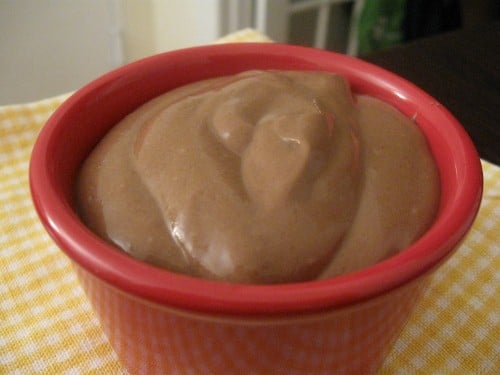
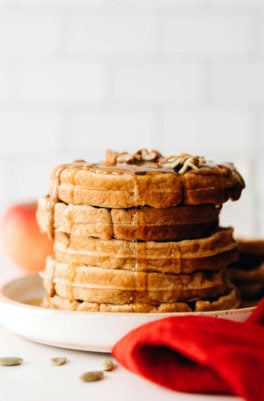
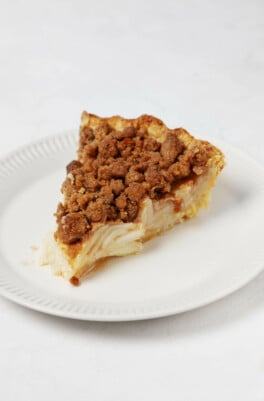
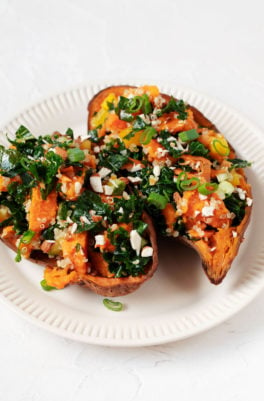
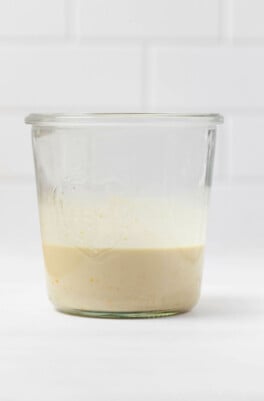
Leave a Comment
Invaluable interview, Gena. Thank you. Fortunately, I don’t have diabetes, but the story of struggle of Jessica and Mike inspire me to pay even more attention to my health and nutrition and keep up with eating raw.
Great interview–and very inspiring, even for those of us without diabetes! And that pudding looks spectacular. 🙂
What a great interview! My dad was diagnosed with type 2 diabetes this year, and it changed all of our lives. I wasn’t aware adults could get diagnosed with type 1. I thought people were born with type 1.
Type 1 can present in anyone, from babies to adults. In adults type 1 is often referred to as type 1.5 or LADA (latent autoimmune diabetes in adults).
Great interview. I’m glad she takes a natural approach. I too feel that artificial sweeteners aren’t something that should be turned towards. They definitely make me a little weary.
I know many people who are diabetic, or have hypoglycemia, and can’t wait to share the site with them. Thanks so much for this!
Very nice, Gena!
wow! what an inspiring interview. my dad is diabetic, as are other members of our family, and this is such an encouraging perspective on life. it’s hard for him because he feels left out and has to use an injection at every meal. however, because of a widened awareness on the role of natural foods in the healthy diabetic diet, his life has become much easier and his blood sugar more manageable. i am constantly grateful for people who are putting the information out that the diabetic life can be managed by wholesome foods and not replacements! 🙂
I use stevia and the other newer ones like agave, etc. But I also use real sugar, etc. Oftentimes the “real” is the better thing. I am not 100% perfect with sweetners of course, but there is no pressure put on myself to be so.
Gena, thank you so so much for commenting on my blog yesterday. I have a lot of respect for you as one of the “big” bloggers (along with ELR, KERF, HEAB, etc)…just my take on the blog-world.
Like I said, I am not raw, but I keep open mind to variety of foods and tastes. And I enjoy simply reading intellingent articles and posts. Ironically I had been thinking about the hardships of diabetes lately because Dr.Oz is doing a show on it soon. Don’t laugh. Yes, I said Dr.Oz. But he actually has some intelligent and interesting things to say sometmes that I find are perhaps more beneficial to the wide population than some of the health “nuts” on TV today, 🙂
I hope to be able to offer intelligent posts like yours sometime in future. Right now, I find it difficult to draw a line between being personal or being informative. In the post I wrote for today, I feel a slight uneasiness about it. Like I have revealed or been a bit too “deep” when my true desire for the blog is to be light, product reviews, some intelligent thought, fun, etc. And to put personal thoughts, worries and resolutions in a journal or through talk with personal friends. But perhaps writing on a blog is the medium that it just happens sometimes. Perhaps we need to write what we feel in the moment and jsut let it be.
Anyway, sorry for writing this novel. Please don’t be a stranger to my blog (though I know you have a billion blogger friends so that might be hard 🙂
EmptyJar – I just started blogging too and am having the same struggle between keeping things interesting and keeping personal thoughts/experiences to myself. I think everyone has to draw their own line. For example, I heart Mama Pea’s blog and think it’s hysterical, but I would never be able to reveal my whole day like that. I look forward to checking yours out!
Great interview with lots of great info!!
Great topic. My mom has type II diabetes despite eating a plant-rich vegetarian diet for most of her life. I wonder if dairy played a role- I know it is a risk factor. I am currently trying to get my mom to start juicing, followed 30 min after with a protein breakfast to avoid a sugar spike. I wonder what other raw concepts would be most beneficial given that she isn’t keen on trying them all at once- cutting out dairy? food combining? Knowing that I probably have elevated risk for diabetes- history of overweight, apple shape, and family history- is a motivating factor for me in eating hi-raw.
WOW! Such a powerful pst that I feel SOOO passionate about! makes me feel so refreshed that I ate raw foods ( and blogged about them) all day. I NEVER feel as good as when I eat raw foods! I need to commit and do this daily!!!
What a great interview! This issue is very dear to me, because my mother was recently diagnosed with Type 2 diabetes. I’ve been urging her to eat more raw food, so I think this will help!
I’m sending her this link immediately!! 🙂
Wow, what a great interview! While, I know people with diabetes (mostly type 1) I admit that I only know the very basics, and I’ve always been embarassed that I don’t know the difference between type I and II. So thank you Jessica for the simple explanation.
Even though I’m not diabetic, I definitely and very conscious of my sugar intake (mostly fruit, stevia and occasional agave or maple syrup). I only wish I had this recipe while in Peru and surrounded by coconuts!
Hello Gena,
I just love your blog and wanted to let you know how much I am intrigued by raw foods. I am a vegan and I am starting to transition into a raw diet. I would love to go fully raw, but I am in dyer need of a dehydrator, juicer, and blender/food processor. (My mother is buying me a Magic Bullet for Christmas, thankfully!) But, I was wondering some things about a vegan raw diet and raw foods in general. How raw do you consider yourself? 100%? What are some great tips or advice that you could give me for just starting out?
I plan on using up the rest of my non-raw ingredients and foods, but by incorporating them into my raw meals. This way I can use my food and not let it go to waste. But, I am planning on not buying any other non-raw goods. However, I have thought of keeping tofu in my diet and maybe a few other things until I can go full-on-raw.
If you have any input, I would greatly appreciate it!
Thanks,
Katie
Hey Katie!
I recommend splurging on a food processor and blender, but save your pennies on the dehydrator — it’s not really crucial for eating more raw.
And how awesome that you’re getting into raw foods! So happy my blog has inspired you. For information on me and my approach, check out the “about me” page; for more tips on getting started, check out the “How to Get Started” tab. That should give you the tips you need. Keep reading!
Gena
curious about the stevia “packets”. they always seem to have weird stuff in them and have bleached stevia. know of any natural kinds?
Hey Bitt —
I use Stevia in the Raw or Herba Dolce, which seem to have most integrity to me. I also buy stevia leaf and boil it whenever possible!
Gena
I I use SweetLeaf stevia. It is not blended with alcohol sugars, maltodextrin, dextrose nor is it extracted using ethanol, methanol, solvents, or enzymes as most are–they use only pure water during the entire extraction process. The powder is only blended with soluble inulin fiber, which is a digestive aid. It also retains the 0 calorie, 0 carb, 0 glycemic index properties of pure stevia. To my knowledge, it is the onlyr truly all-natural stevia on the market(it was also the first to receive GRAS status from the FDA–others receive that status about 9 months later).
Hope this helps!
Thanks for this post Gena! I was always under the misconception that Type 1 was diagnosed during childhood, and that adults could only get Type 2, brought on by being obese/unhealthy…. since I know realize this assumption to be incorrect, is there anything that we should be doing to help prevent the onset of Type 1 occurring in adulthood?
Thanks for all these comments!
Adults can get type 1. Type 1 in adults is sometimes referred to as Type 1.5 or LADA (Latent Autoimmune Diabetes in Adults). There is no known way to prevent type 1 diabetes. It’s an autoimmune disease and its onset has nothing to do with lifestyle, diet, exercise, etc…
Although often the case, type 2 is not always a result of obesity or dietary missteps. My mother was diagnosed at the age of 39 with type 2 at 110 pounds and 5’4″. Instead of insulin, her doctor put her on a restricted diet, not accounting for her already low body weight. After a month she was 90 pounds, weak, and sick. Her blood sugar was 400-500 the entire time. Now (25 years later) she continues to eat an extremely healthy diet (including much raw food) which might have kept her organs from sustaining long-term damage despite seven years of uncontolled blood sugar and over two decades as a diabetic. So although dietary decisions may not prevent diabetes (and certainly not type 1), it can go a long way in making your life longer and better. Predictions for my mom when first diagnosed were loss of limbs, kidney damage, blindness, etc. She is still in perfect health.
A very informative comment, Mimi, thank you!
Great interview. My dad has type 1; he was diagnosed probably eighteen years ago now. It constantly amazes me how much the body can adapt to handle things based almost solely on what we choose to put in it. I will definitely check out Jessica and Mike’s site. Thanks!
Thanks for bringing attention to this, Gena! I admit, I am one of those people who never grasped the difference in the types of diabetes and this was really informative and I am blown away by how “taking it in stride” both Jessica & Mike are…what great attitudes!
Your pudding looks awesome. I actually “Can get down with an avocado base” LOL but this looks soo rich & creamy. I will also admit to being scared of coconut hacking 🙂
What a neat interview. I didn’t know that carob was a good source of iron… maybe next time at the store I’ll be stocking up on carob chips instead of my chocolate ones 🙂 The pudding looks delicious, too.
Even though I don’t have diabetes, I still found the information in this interview very helpful and interesting. Jessica’s blog looks great as well!!
Oh and that carob pudding?? Stellar. Now if only I wasn’t afraid of hacking open coconuts… 😉
Great interview. And the pudding looks amazzzing. 🙂